6 Ways to Restore Yellow Teeth
These quick fixes can help bring back those pearly whites
(This article previously appeared on Grandparents.)
What Causes Teeth to Yellow?
There are many reasons that teeth begin to yellow. Unfortunately, "it's natural for teeth to get darker as we age," says Dr. Richard Price, a dentist and national spokesperson for the American Dental Association (ADA). "The enamel on the tooth wears as we get older, and the inner dentin shows through."
That dentin has a yellowish tint, causing our teeth to appear more yellow. Other causes include medications, including those for high blood pressure and tetracycline if ingested in childhood, chemotherapy, an excessive amount of fluoride in your water, and trauma to a tooth (like from being hit in the mouth).
Flip through the slideshow below to learn some easy ways to restore your yellowed teeth.
1 of 7
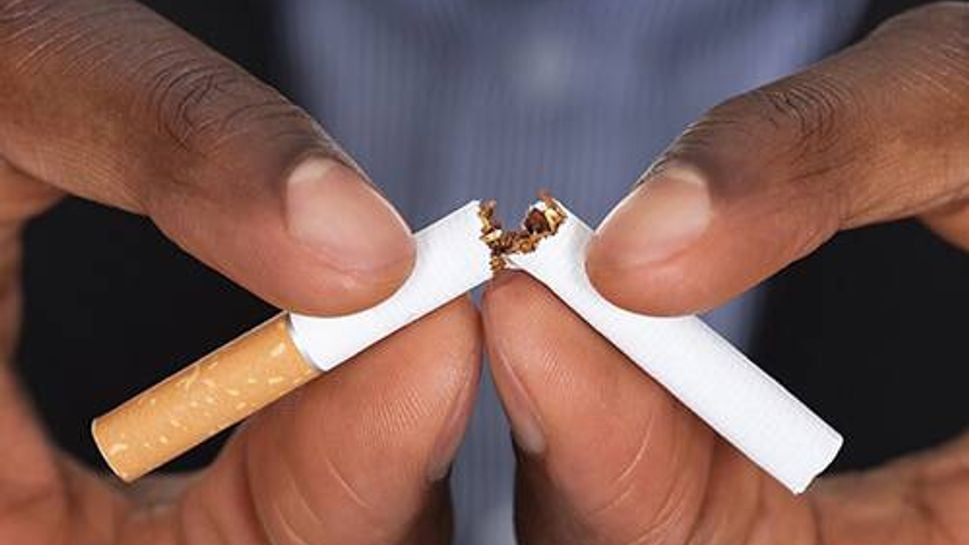
Fix #1: Adjust Your Lifestyle
“Tobacco, with its tars and nicotine, is a big villain” when it comes to yellowing, says Price. Tobacco use, along with consuming certain foods and drinks, such as red wine, dark sodas, berries, coffee, and tea, can stain teeth and cause them to yellow. “If it stains the carpet, it stains the mouth,” Price says. Reducing your intake of these and quitting smoking will help prevent teeth from staining and keep your smile bright. You can also try swishing with water after drinking or eating, or drinking through a straw if you don't have access to a toothbrush right away, which may help prevent staining.
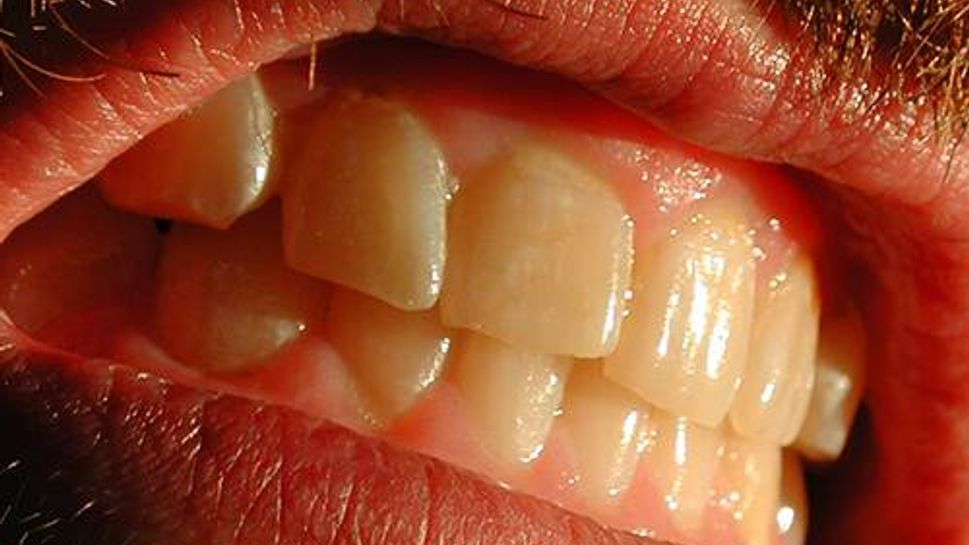
Fix #2: Stop Grinding Teeth
One surprising contributor to yellowing teeth: grinding. If you're a chronic teeth grinder, the extra stress could contribute to aging teeth, according to AskTheDentist.com. Grinding "may affect the color at the edges of the front teeth," Price says, since the motion eventually wears down the enamel and reveals the inner dentin. Kicking this habit will help save your teeth from looking yellowed and aged prematurely.
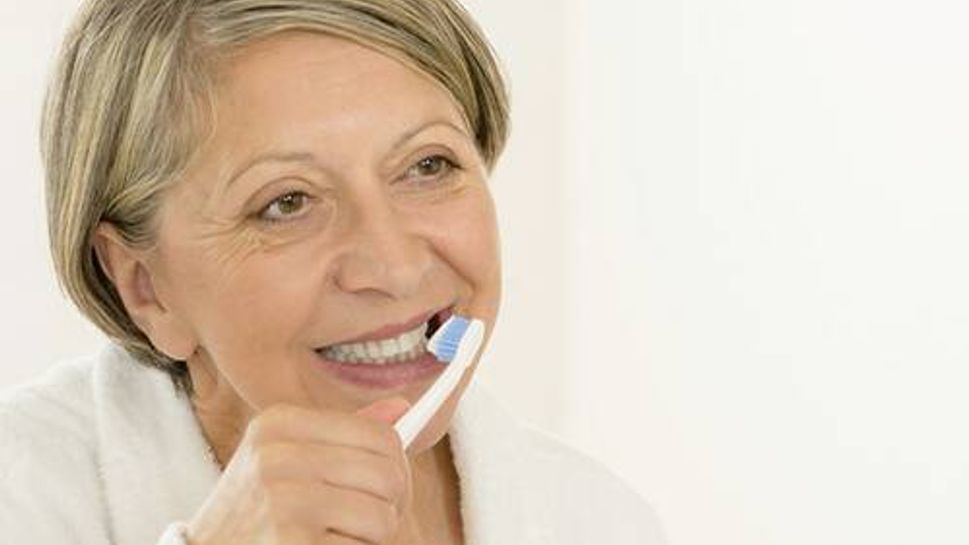
Fix #3: Proper Brushing
One of the best ways to prevent teeth from yellowing any more than normal is to take proper care of them. Keep up with brushing and flossing, and use toothpaste that’s not too abrasive, says Price. Good dental hygiene helps prevent cavities, which can also discolor teeth. “Seniors really don’t think about it,” Price says. But some research shows that older adults are getting cavities two times more than teenagers are. Whitening toothpastes will be good at removing stains, says Price, but don't count on them for bleaching your teeth. Good home care is the first step to keeping teeth whiter.
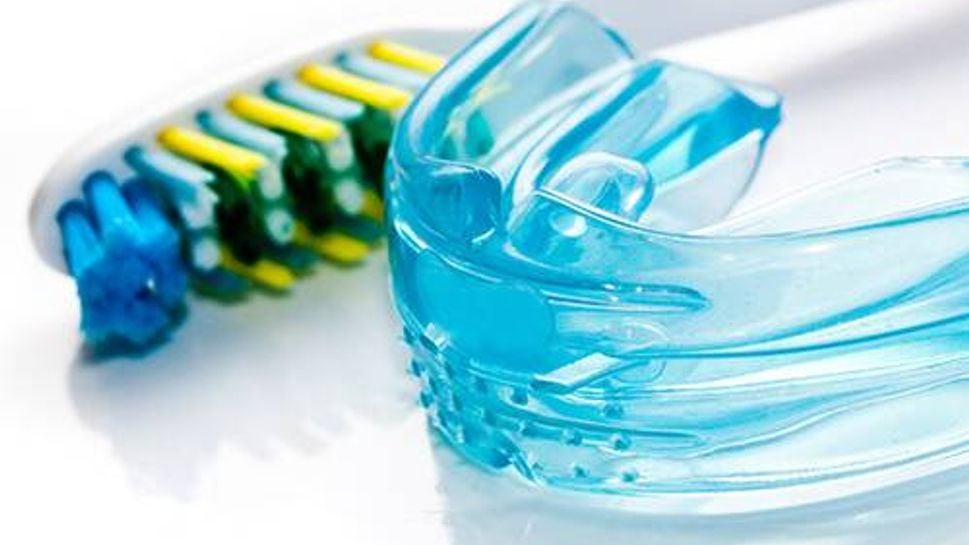
Fix #4: Over-the-Counter Products
Over-the-counter products can help lighten discolored teeth and are inexpensive compared to professional whitening. However, Price cautions that before you begin using an at-home whitening product, consult your dentist to ensure your mouth is healthy. Some teeth cannot be bleached, like those with caps or crowns. It’s also possible to over bleach, which can give teeth an unnatural opalescent look, Price says. Without knowing the concentration of hydrogen peroxide or carbamide peroxide, the bleaching agents, it’s hard to tell if whitening products are safe for home use. If you choose to use over-the-counter products, consult a dentist first and look for the ADA Seal of Acceptance, which certifies that they contain 10 percent carbamide peroxide.
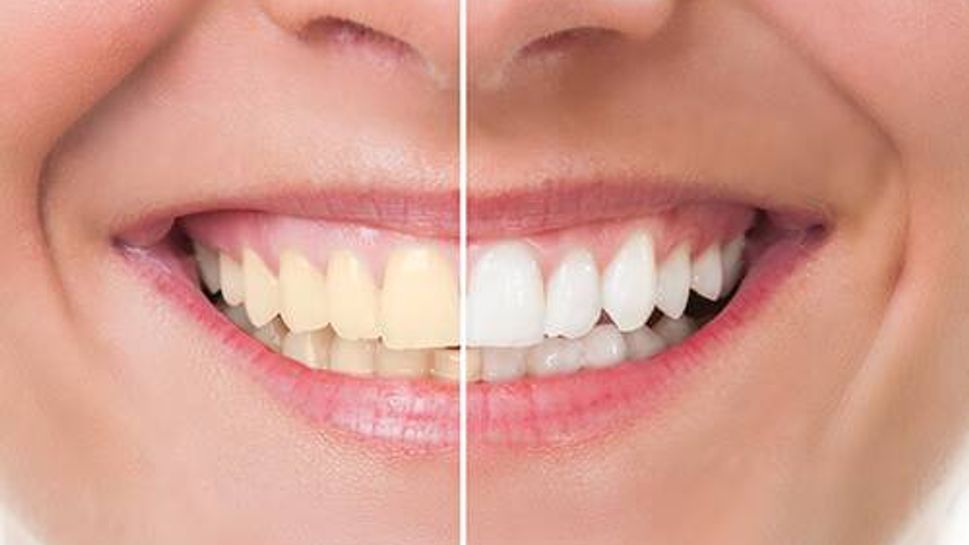
Fix #5: Bleaching
In-office bleaching, performed by your dentist, is the least invasive way to whiten teeth and prevent yellowing, says Price. Dentists use products that contain hydrogen peroxide in concentrations ranging from 25 to 40 percent, according to the ADA. Your dentist will protect your gums, tooth enamel, and the rest of your mouth from damage during the procedure, which lasts for about an hour. This method, while most effective, is also the most expensive, with an average cost of $650, according to the Consumer Guide to Dentistry.
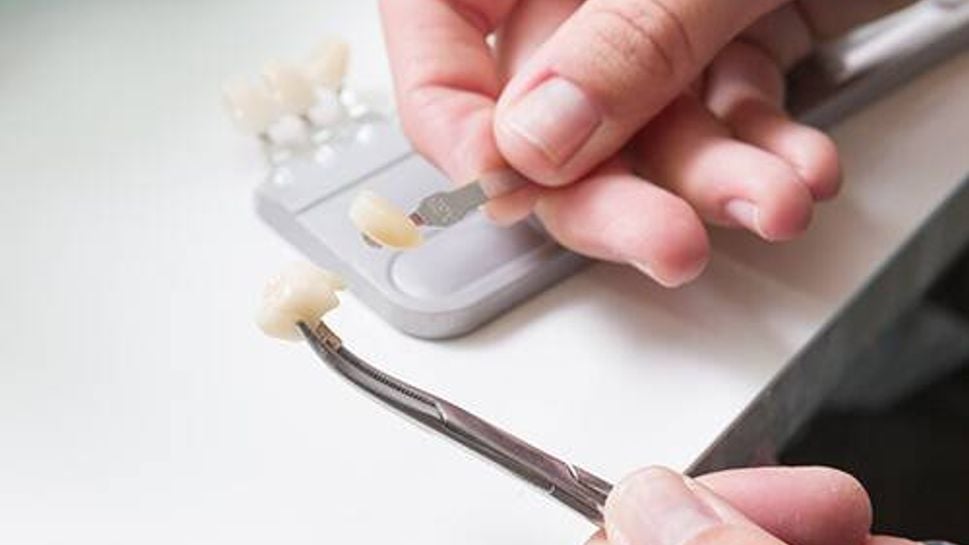
Fix #6: Veneers
Dental veneers have many uses, including changing the shape or look of teeth. Veneers are shells made of porcelain or resin materials that cover the tooth and improve the appearance of discolored teeth. Your dentist can adjust the shade of the veneer to match other teeth or lighten a tooth that has yellowed or darkened. Porcelain veneers are stain-resistant and can last five to 10 years before needing replacement. Since some of the tooth’s enamel needs to be removed so the veneer can bond correctly, the process is usually irreversible and requires several trips to the dentist.
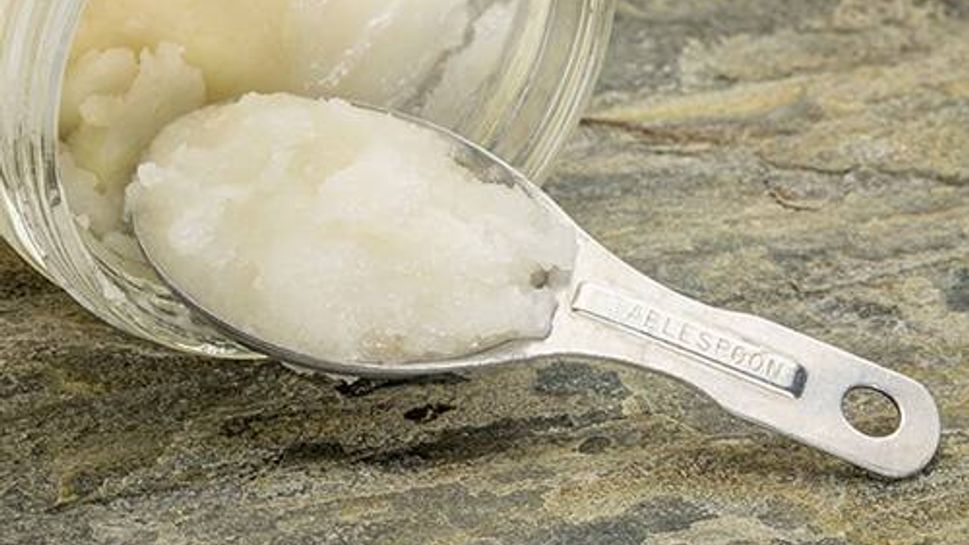
Bonus: Natural Oil Pulling
Oil pulling is the latest natural fad for a fresh mouth, but it's actually a very old practice. It comes from ancient Ayurvedic medicine and involves swishing a tablespoon or so of oil, usually coconut, around the mouth for about 20 minutes. The idea is that bacteria in the mouth will be pulled out by the swishing and then trapped in the oil, leading to whiter teeth, fresher breath, and a host of other health benefits. Although there haven't been enough studies on oil pulling to determine if it's actually effective, one small study found that it led to reduced levels of plaque and plaque-induced gingivitis after seven days of use. Try swishing a tablespoon of coconut oil around your mouth for 20 minutes daily, then spit and rinse well.
Another natural fix to consider: apple cider vinegar. Some people swear by gargling with a little apple cider vinegar in the morning to whiten teeth.
Grandparents.com is a lifestyle website, social media community & peer group that unites & connects America's 70 million Grandparents to the best information and premier products & services just for them. Our goal is to promote well-being and give timely information on what really matters to you, from health and money to family and relationships to travel and retirement.

